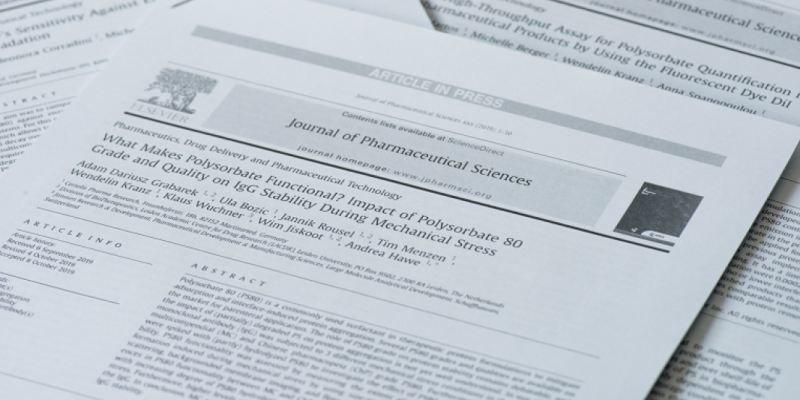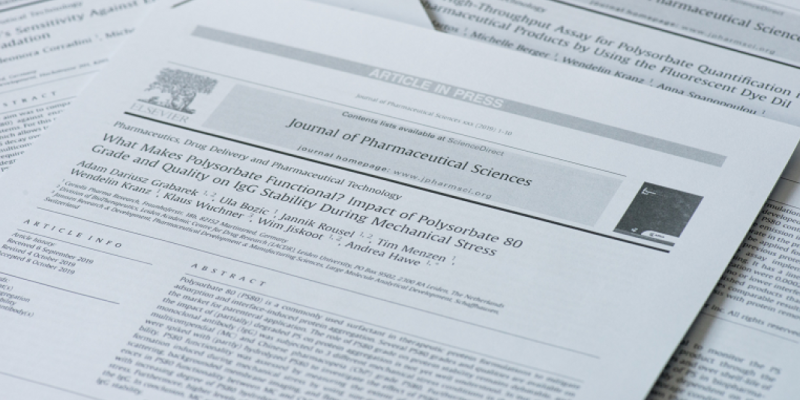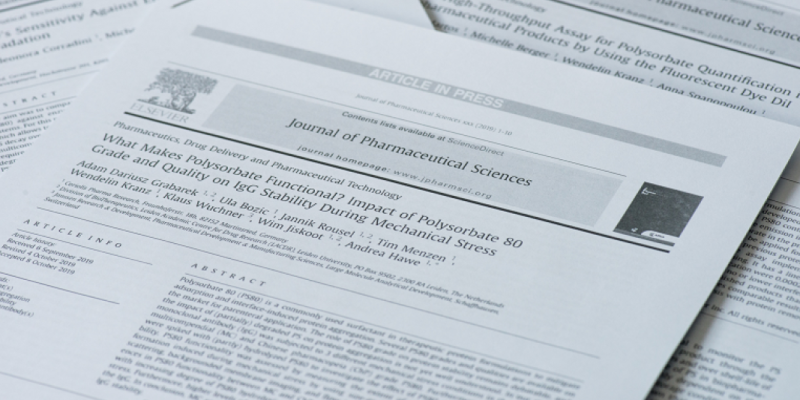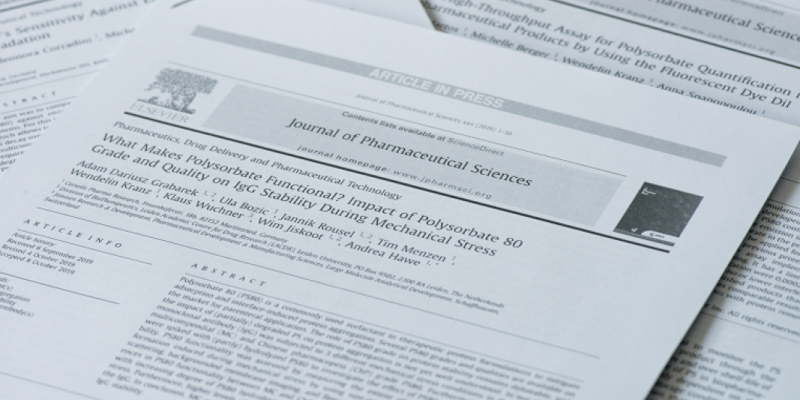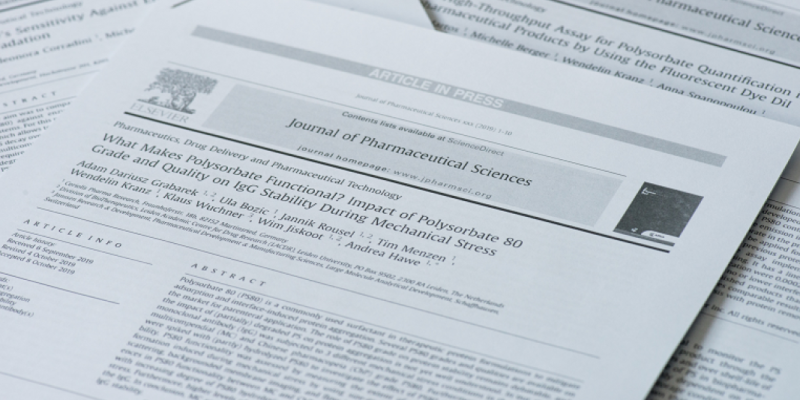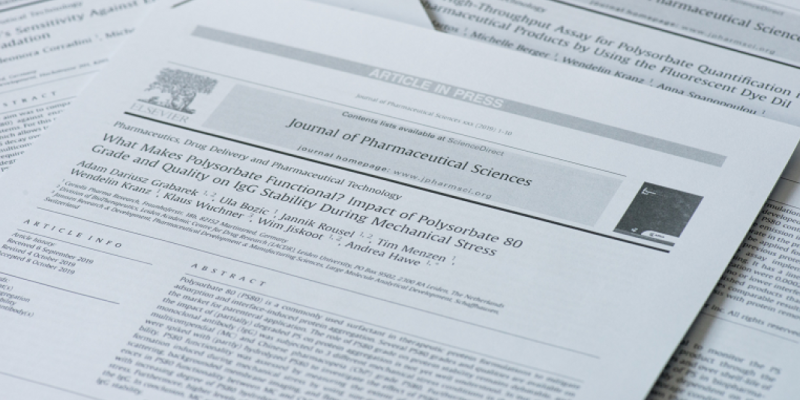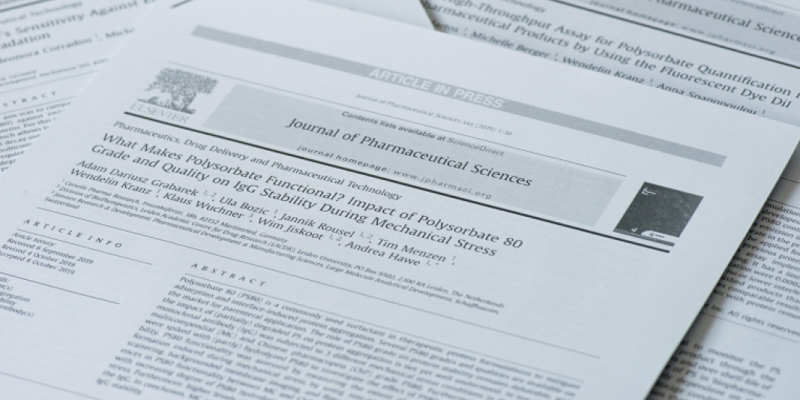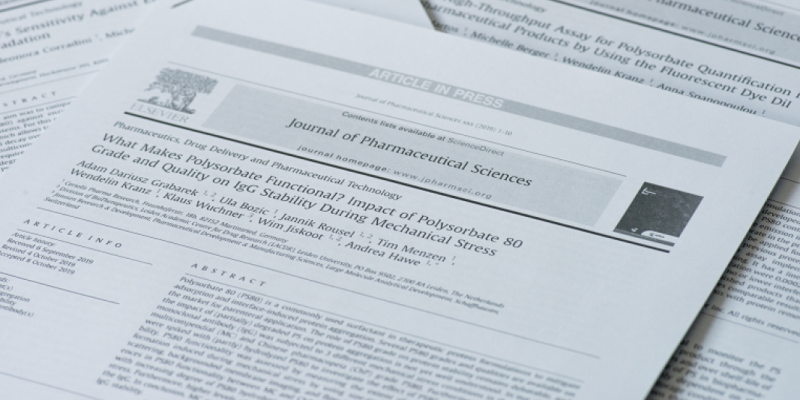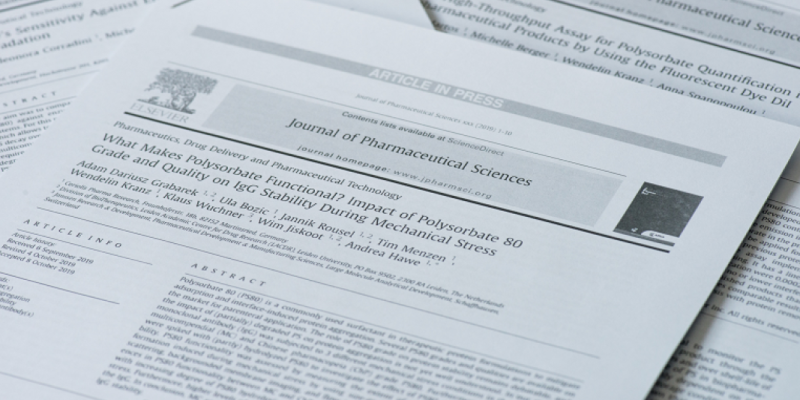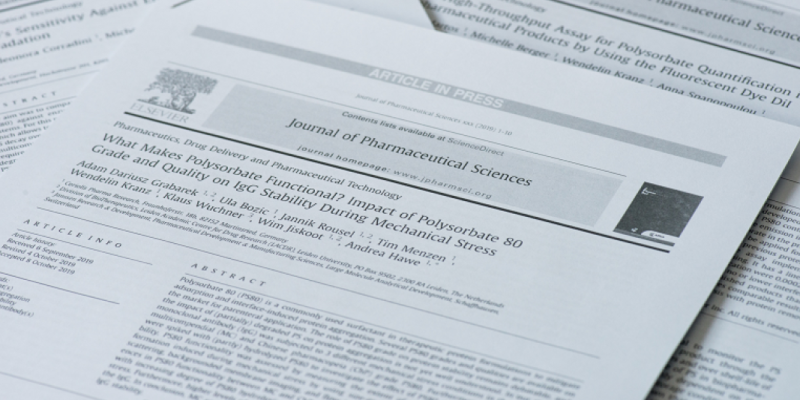Fate of Multimeric Oligomers, Submicron, and Micron Size Aggregates of Monoclonal Antibodies Upon Subcutaneous Injection in Mice.
J Pharm Sci. 2016 MAY
The aim of this study was to examine the fate of differently sized protein aggregates upon subcutaneous injection in mice. A murine and a human monoclonal immunoglobulin G 1 (IgG1) antibody were labeled with a fluorescent dye and subjected to stress conditions to create aggregates. Aggregates fractionated by centrifugation or gel permeation chromatography were administered subcutaneously into SKH1 mice. The biodistribution was measured by in vivo fluorescence imaging for up to 1 week post injection. At several time points, mice were sacrificed and selected organs and tissues were collected for ex vivo analysis. Part of injected aggregated IgGs persisted much longer at the injection site than unstressed controls. Aggregate fractions containing submicron (0.1-1 μm) or micron (1-100 μm) particles were retained to a similar extent. Highly fluorescent "hot-spots" were detected 24 h post injection in spleens of mice injected with submicron aggregates of murine IgG. Submicron aggregates of human IgG showed higher accumulation in draining lymph nodes 1 h post injection than unstressed controls or micron size aggregates. For both tested proteins, aggregated fractions seemed to be eliminated from circulation more rapidly than monomeric fractions. The biodistribution of monomers isolated from solutions subjected to stress conditions was similar to that of unstressed control.
J Pharm Sci. 2016 MAY
https://jpharmsci.org/article/S0022-3549(16)00400-7/fulltext

